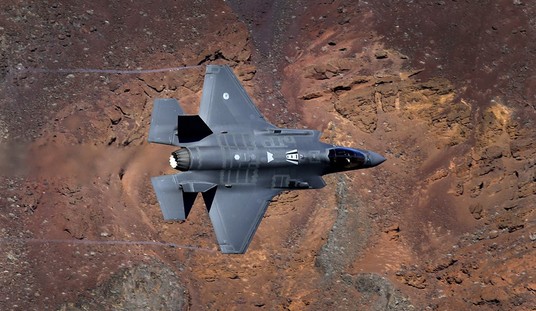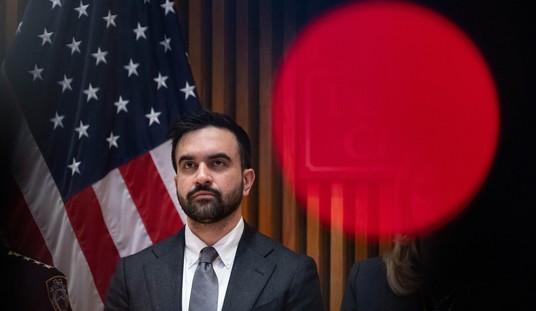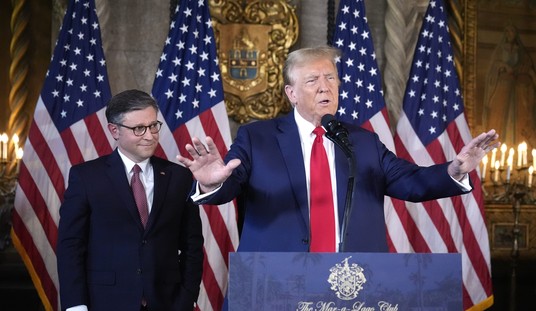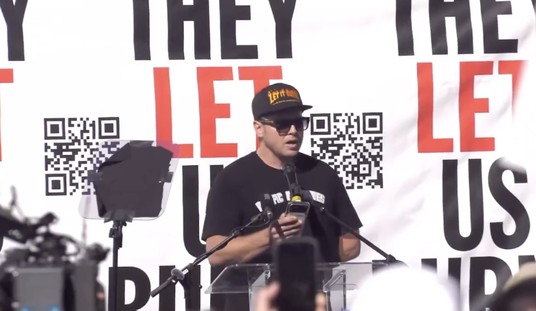 IMAGINE A GOVERNMENT agency designed for the specific purpose of investigating and preventing the unlawful use, manufacture, and possession of firearms. Now imagine this agency engaging in an operation that not only goes against that purpose, but actually seeks to accomplish the opposite, by actively encouraging the sale of firearms to people whose ties to organized crime and gun violence are well known– and that this operation involves sending firearms across an international border into a country that this agency, and the government of which it is a part, purposely failed to warn, inform, or request permission from.
IMAGINE A GOVERNMENT agency designed for the specific purpose of investigating and preventing the unlawful use, manufacture, and possession of firearms. Now imagine this agency engaging in an operation that not only goes against that purpose, but actually seeks to accomplish the opposite, by actively encouraging the sale of firearms to people whose ties to organized crime and gun violence are well known– and that this operation involves sending firearms across an international border into a country that this agency, and the government of which it is a part, purposely failed to warn, inform, or request permission from.
That, in a nutshell, is the Obama administration’s “Fast and Furious” program, whose development, bloody results, and ongoing cover–up are comprehensively documented and presented by investigative journalist Katie Pavlich in her new book, Fast and Furious: Barack Obama’s Bloodiest Scandal and its Shameless Cover–Up (Regnery, 2012). In the book’s ten chapters and 222 pages (of which nearly sixty are appendices and meticulously cited endnotes), Pavlich makes the case that the Obama administration’s “gunwalking” operation “wasn’t a ‘botched’ program, [but] a calculated and lethal decision” by the U.S. Bureau of Alcohol, Tobacco, and Firearms, with the full knowledge and assent of the Departments of Justice and of Homeland Security, “to purposely place thousands of guns into the hands of ruthless criminals” (p. 162).
The plan was simple – and both clearly and blatantly stupid (Pavlich quotes ATF agent Peter Forcelli as saying, “I can’t think of a single, logical strategy as to why [Fast and Furious] would have worked” [p. 47]). ATF agents like Hope MacAllister, the lead case agent for Fast and Furious, approached Phoenix–area gun stores and “requested” their cooperation with a program that would allow for the monitoring, tracking, and (ostensibly) prosecuting of gun buyers for deadly Mexican drug cartels (pp. 46–47; as the ATF has the ability to pull gun shops’ licenses, this was far more of an involuntary deputization than a simple request for assistance). Cameras were installed in the cooperating gun shops, and ATF agents watched as “straw purchasers,” or cartel gun mules, made massive firearms purchases in cash.
From this point, the ATF (and its DOJ masters) planned to track the purchased guns to their end users, thereby gaining insight into the cartels and gaining the ability to do far more damage to these violent organizations than they would have been able to simply by arresting each “straw purchaser” they caught. Unfortunately, the Mexican government was intentionally kept in the dark, and none of the decision–makers at DOJ or ATF evidently considered the consequences or repercussions that would result from allowing thousands of weapons, from 9mm pistols to massive 50-caliber BMG longrifles, “walk” across America’s southern border and directly into the hands of some of the deadliest people in the western hemisphere.
THOUGH U.S. ATTORNEY Dennis Burke and Assistant U.S. Attorney Emory Hurley – both employees of Obama-appointed Attorney General Eric Holder, who has had an antagonistic relationship with the truth regarding Fast and Furious (pp. 129, 132–3, 150, 154, etc.) – ensured that cartel purchases from involuntarily deputized Phoenix gun shops remained monitored, they actively prevented agents from “interdicting weapons” that were en route to Mexico, and the relevant criminal cases were dropped as soon as the suspects and their newly–acquired weapons crossed the border (p. 42).
As dealers began voicing concern to the ATF over the guns the agency had tasked them with selling to cartel-related buyers, they were reassured that “guns weren’t being sent over the border and into Mexico” (pp. 56-58), and the DOJ publicly claimed that ATF “has never knowingly allowed the sale of assault weapons to suspected gunrunners” (p. 81). In one case, a cartel buyer requested five times the number of 9mm firearms that a gun store had in stock. When the dealer reached out to the ATF to request guidance, he was told to order the additional guns and make the sale.
Fast and Furious weapons began to turn up at murder scenes throughout Mexico and in the southern U.S., as anybody but the ATF and DOJ decision-makers could have predicted (a map is provided in image 4, between pp. 104–105; these include the murder of Agent Brian Terry and of the brother of a Mexican Attorney General). The Mexican government had purposely been kept in the dark about the program, and though the revelation of its existence and its scope caused an outrage, Obama’s State Department staunched Mexico’s outcry by threatening to cut off $500 million in U.S. anti-cartel aid if criticism of Fast and Furious did not cease (pp. 110–111). At the same time, DOJ was issuing gag orders regarding the program (p. 101) and leaders within ATF were doing their best to intimidate and ostracize whistleblowers (pp. 115–121). Further, instead of focusing on cartel buyers and drug–related gun violence, the DOJ railed against American gun shops, accusing them of serving as “the gun locker of the Mexican drug cartels” (p. 43) and declaring that “Mexican Drug Lords go shopping for war weapons in Arizona” (p. 71) – without, as Pavlich notes, “mention[ing] that the gun shops that had sold these guns would not have done so had it not been on orders from the ATF” (ibid).
In addition to demonstrating the intentional nature of ATF’s gunwalking program, and the lunacy of those involved in planning and executing it, Pavlich also records the descent of that agency from enforcement of the law to bureaucratic nonsensicality (a theme begun in the introduction, written by ATF Special Agent Jay Dobyns [pp. 1–8]). For example, on page 43, she conveys Peter Forcelli’s recounting of a 2010 case concerning a suspect who was “believed…to be sending grenades out of the [U.S.], trafficking parts for grenades into Mexico, and then building the explosives for the cartels.” Emory Hurley’s directive to the agents: “[D]o not let [the suspect] leave the country, but if you catch him leaving the country, we won’t prosecute him.” The suspect, Jean Baptiste Kingery, was eventually caught attempting to cross the U.S.–Mexico border “with grenade parts and components packed in his tires,” but after offering “a full–blown confesion…that he had been making grenades for the cartels and smuggling explosives over an international border,” Hurley and Dennis Burke “dismissed the case and Kingery went free” (ibid).
THE PROSE IS slightly clunky at times, and the book’s organization could be improved. The latter is most apparent with regard to the proximity between the presentation of evidence about Fast and Furious, and the author’s efforts to draw a direct line from the operation to purported efforts by President Obama and Attorney General Holder to severely curtail gun rights in America. This is not to say that the subject isn’t relevant to the overall narrative; in fact, it is very important to consider the evidence Pavlich presents in support of her assertion that, “Under Eric Holder, the ATF was deputized to change the nation’s gun laws by putting in place a shadowy operation designed to prove a falsehood: that weapons sold by U.S. gun shops, especially ‘assault weapons,’ are the cause of Mexico’s drug violence. By creating public outrage, President Obama, Eric Holder, and other administration officials, all with longstanding records of hostility against the Second Amendment, hoped to reinstate the assault weapons ban, which had been one of their early, but failed, political goals” (p. 154). However, while Pavlich demonstrates the existence of these efforts, the overall narrative might have been better served by relegating commentary on them to a chapter or two at the end of the book.
Additionally, the book’s presentation as a largely continuous narrative actually masks some of its most outrageous revelations about Fast and Furious and its cover–up. The author occasionally drops bombshells in the middle of pages and paragraphs, but continues on with the narrative without allowing the reader a moment to fully absorb their impact. For example, on page 55, Pavlich notes in passing that “On June 10, 2010, as complaints from ATF agents in Mexico escalated, Hope MacAllister asked the National Tracing Center to hold off on tracing gun that were being recovered in Mexico. The [NTC] waited for instructions on when to resume tracing the guns. They never received such orders. It appeared the Phoenix office did not want the Mexican government or ATF agents in Mexico to know that so many of the guns were traceable to gun shops cooperating with Fast and Furious.” Given the fact that the entire program was based on tracing the firearms that had been sold by forcibly–deputized gun shops and allowed by the ATF to walk over the Mexican border, the revelation that MacAllister ordered an indefinite halt to the tracing of these guns is a major bombshell, and was almost certainly worthy of more attention in the text than it received (the narrative continues immediately after that paragraph with a shift to David Voth’s claims of the “great progress” being made by the operation).
However, these minor shortcomings do not do much to take away from the book’s purpose or its overall impact, which should be to open the general public’s eyes to the enormity of this scandal, and to force media to acknowledge it despite their best efforts not to since it became public knowledge nearly two years ago. The book closes with another bombshell (this time in summation of the evidence and narrative presented throughout the book. Pavlich writes, “There are still 1,400 Fast and Furious guns missing, and ATF agents are not actively trying to track them down. Ten thousand rounds of ammunition were sold to cartel–linked straw buyers under the watch of the ATF. Eight hundred of the original 2,500 weapons sold through Fast and Furious have already been linked to criminal activity. We can be certain this is only the beginning” (p. 154).
The media have largely been silent on Fast and Furious since the public became aware of the operation in the wake of Border Patrol Agent Brian Terry’s murder in December 2010. The eye–opening case presented in this book should not only force the media to do their jobs and pay attention, but it should also serve as an instrument of information for the voting public as a whole during this campaign season, as the executive who is ultimately responsible for this scandal and those who implemented it (and covered it up) is actively seeking an electoral mandate for a second term in office.
Fast and Furious: Barack Obama’s Bloodiest Scandal and its Shameless Cover–Up, by Katie Pavlich (ISBN 978-1-59698-321-2; 222 pages; $27.95), is published by Regnery.














Join the conversation as a VIP Member